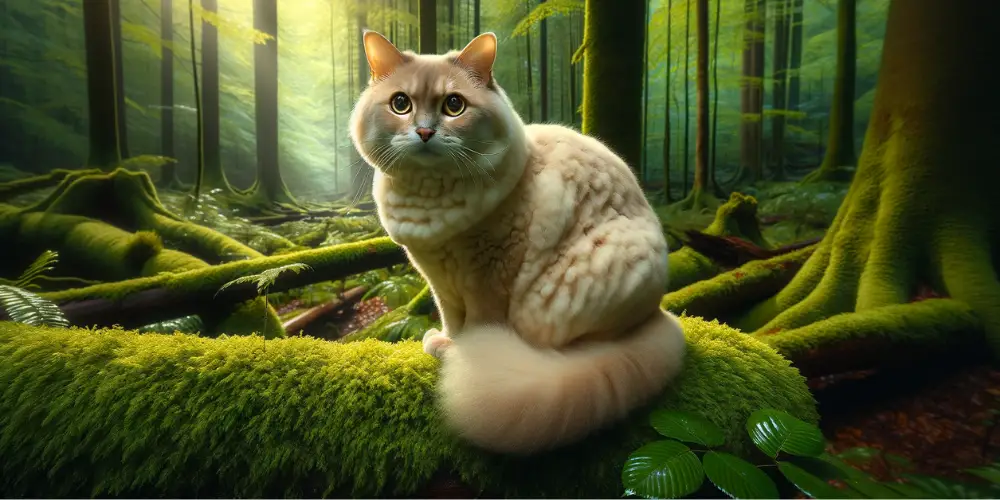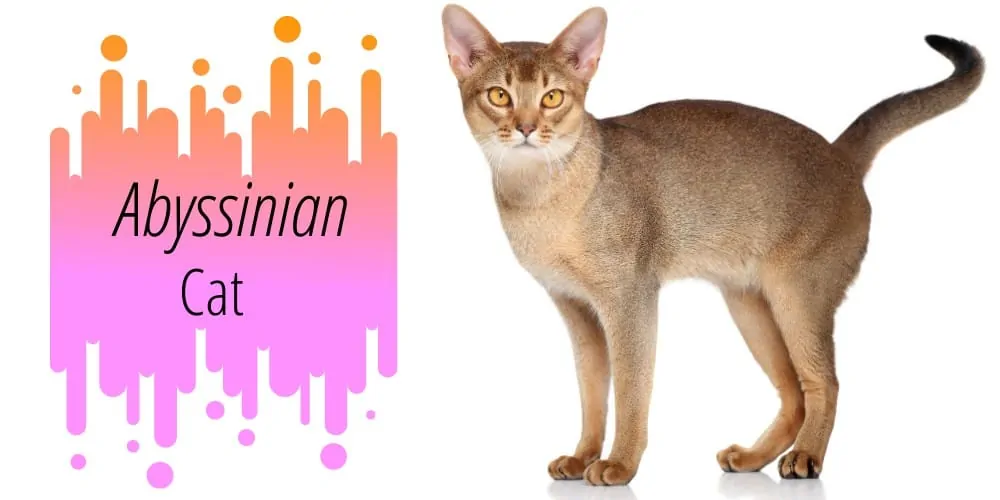In the vast and vibrant world of felines, cream-colored cats stand out with their unique elegance and captivating charm.
These breeds, each with distinct characteristics, add a touch of grace to the tapestry of cat varieties.
Here are the top 10 cream-colored cat breeds showcasing their allure.
1. Maine Coon: The Gentle Giant
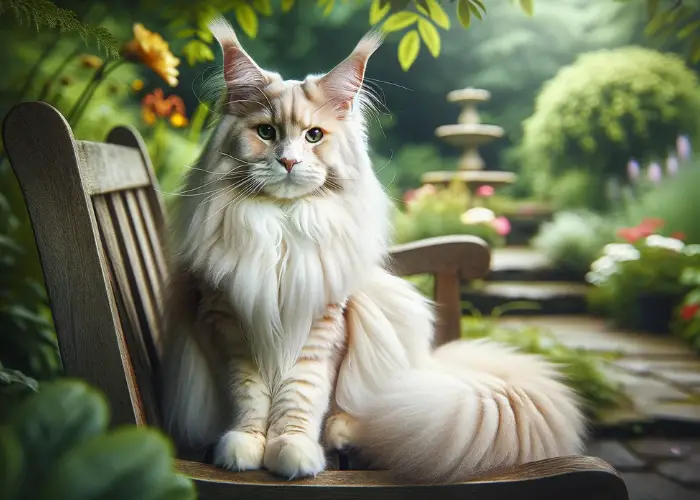
The Maine Coon, known for its impressive size and friendly nature, is a breed that captivates with its luxurious, long, cream-colored fur. These gentle giants are a visual delight renowned for their amiable and sociable demeanor.
2. Persian: The Embodiment of Elegance
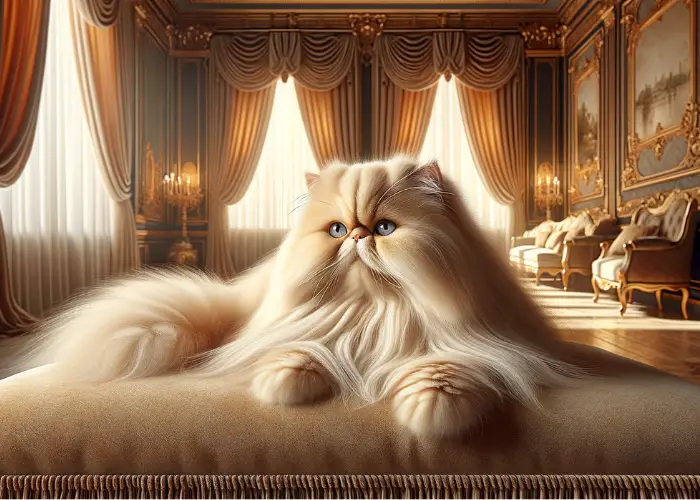
Persians are synonymous with elegance, famous for their long, silky cream coat and distinctive flat face. This breed exudes a regal aura, with their luxurious fur making them one of the most beloved cream-colored cats.
3. Siamese: The Striking Blue-Eyed Cat

Siamese cats are instantly recognizable for their striking point coloration, which can splendidly include cream points. Their captivating blue eyes, combined with the cream hues, make them a breed of both beauty and mystique.
4. Ragdoll: The Placid Companion

Ragdolls are cherished for their gentle, docile nature. Their beautiful cream coloration, often paired with stunning blue eyes, makes them visually appealing and incredibly soothing companions.
5. Munchkin: The Playful Miniature
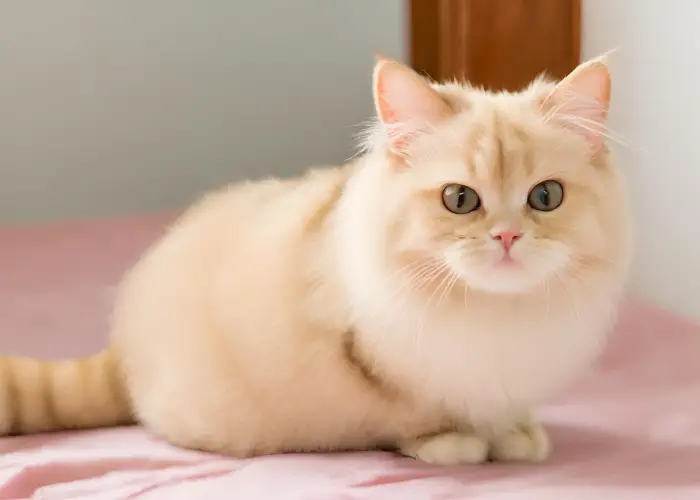
Munchkins are distinguished by their short legs, and their playful, cream-colored coat adds to their unique appeal. Despite their small stature, these cats are full of energy and affection.
6. Manx: The Tailless Wonder
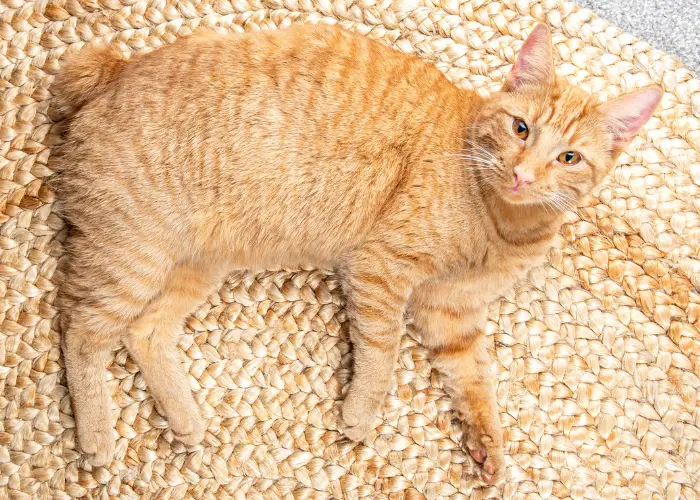
The Manx breed, noted for its distinctive taillessness or short tail, often sports a robust, cream-colored coat. This unique physical trait and warm cream fur make the Manx a truly special breed.
7. Selkirk Rex: The Curly-Coated Charm

The Selkirk Rex, unique for its curly fur, often comes in an enchanting cream color. This breed’s distinctively soft, wavy coat provides an alluring texture, making it a standout choice for those who admire unusual feline beauty.
8. Snowshoe: The Creamy Siamese Cousin
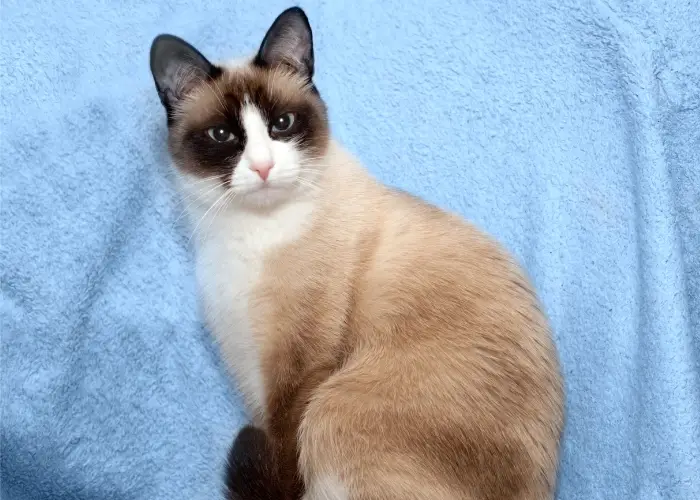
A delightful mix of Siamese traits with American Shorthair influences, the Snowshoe breed often flaunts a cream coat adorned with distinctive white markings. This breed inherits the striking blue eyes of the Siamese, which, combined with its cream and white fur, gives it a remarkable appearance.
9. Sphynx: The Hairless Cream Canvas
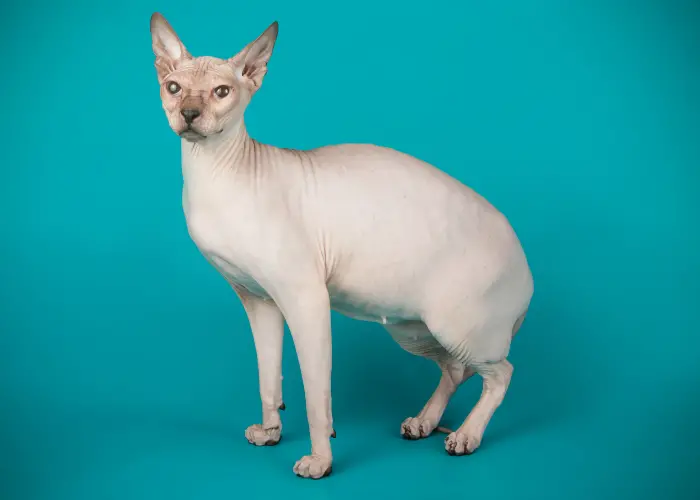
Known primarily for being a hairless breed, the Sphynx can display a unique cream hue on their skin, offering a distinct version of cream coloration. These cats are renowned for their extroverted and loving nature, often seeking warmth and affection from their human companions.
10. Norwegian Forest Cat: The Cream-Coated Norseman

Hailing from Norway and adapted to cold climates, the Norwegian Forest Cat can boast a long, cream-colored, water-repellent coat. This breed is known for its robust and adventurous spirit, matched by a majestic cream coat that enhances its natural elegance.
Each of these top 10 cream-colored cat breeds brings its unique charm and characteristics, illustrating the diversity and beauty within the feline world.
Whether it’s the affectionate nature of the Ragdoll or the striking appearance of the Siamese, these cream-colored cats are a testament to the enchanting variety and allure of the feline kingdom.
Their distinct personalities and stunning cream hues make them highly sought-after companions.
They enrich the lives of their human caretakers with elegance, warmth, and diverse characteristics.
Each breed offers a unique window, from the curly-coated Selkirk Rex to the robust Norwegian Forest Cat.
They allow us to peer into the delightful world of cream-colored felines. This world is full of charm, grace, and captivating beauty.
Health and Genetics of Cream-Colored Cats
![]()
The health and genetics of cream-colored cats are topics of considerable importance, marked by specific nuances directly tied to their distinctive pigmentation.
These feline beauties, with their eye-catching cream coats, often carry genetic traits that are both fascinating and, at times, complex.
Genetic Makeup and Pigmentation
Cream color in cats is the result of specific genetic combinations. This hue typically arises from a dilution gene that modifies the base color, such as black or red, into a softer, creamier tone.
Understanding this genetic mechanism is crucial for breeding programs and appreciating the uniqueness of each cream-colored cat.
Health Considerations Specific to Pigmentation
The unique pigmentation of cream-colored cats can sometimes be linked to specific health considerations.
For instance, cats with lighter fur, including creams and whites, may have a higher predisposition to skin conditions or sunburn.
Their sensitive skin necessitates additional care, particularly in sunnier climates or during peak sunlight hours.
Auditory and Visual Health
In some cases, there is a correlation between lighter coat colors and auditory or visual impairments.
Cats entirely white or predominantly cream, especially those with blue eyes, may have a higher likelihood of congenital deafness.
Regular health check-ups are essential to monitor these potential issues and ensure that special needs are met effectively.
Importance of Responsible Breeding
A thorough understanding of the genetics behind cream coloration is fundamental for breeders.
Responsible breeding practices involve selecting pairings not just for aesthetic qualities but also for health considerations.
This approach helps to reduce the risk of passing on hereditary health problems to offspring.
Owner Awareness and Care
Owners of cream-colored cats should be well-informed about these specific health aspects.
Awareness about potential genetic health issues enables owners to provide proactive care.
This includes regular veterinary check-ups, appropriate skin care, and creating a safe environment that caters to the cat’s potential sensory needs.
In conclusion, the health and genetics of cream-colored cats are as unique as their beautiful coats.
For those fortunate enough to share their lives with these cats, understanding and addressing these specific health considerations is a key part of ensuring their well-being and happiness.
Grooming and Care for Cream-Colored Cats
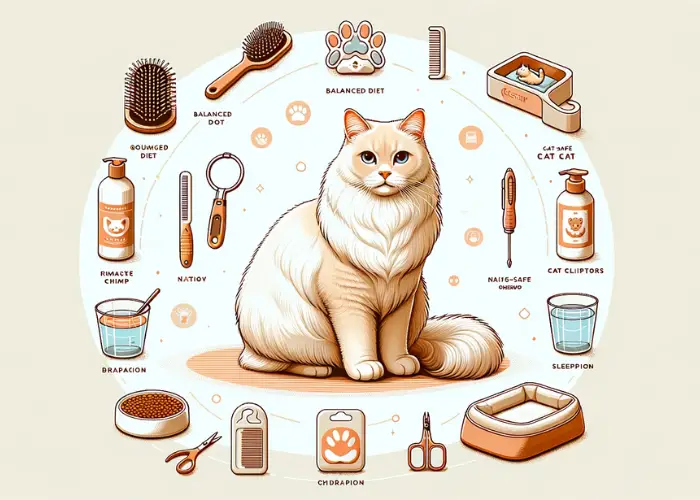
Proper grooming and care are essential for maintaining the health and beauty of cream-colored cats.
Their distinctive lighter coats make a striking visual impression and come with specific grooming needs.
Specialized Grooming Routines
- Frequent Bathing: Cream-colored cats may need more frequent baths compared to darker-furred cats. Their lighter coats can show dirt and stains more readily.
- Regular Brushing: Consistent brushing is vital. It helps remove loose fur, prevent matting, and distribute natural oils throughout their coat.
- Hairball Prevention: Regular grooming reduces hairballs, a common issue in cats, especially those with longer fur.
Maintaining the Coat’s Condition
- Use of Specific Products: It’s advisable to use cat-specific grooming products. These are designed to be gentle on their skin and effective for their coat type.
- Attention to Sensitive Areas: Areas like under the arms and behind the ears often require extra attention during grooming sessions.
- Spot Cleaning: For small areas of dirt or stains, spot cleaning can be a quick and effective solution.
Additional Care Considerations
- Skin Care: Cream-colored cats might have more sensitive skin due to their lighter pigmentation. Using sun protection in sunny climates can be beneficial.
- Regular Check-ups: Visits to the veterinarian can include coat and skin assessments, ensuring that potential issues are identified early.
- Diet and Hydration: A healthy diet and ample hydration also play a crucial role in maintaining a healthy coat.
Caring for a cream-colored cat’s coat demands a blend of regular grooming, appropriate products, and attention to their overall health.
Their light coats, while beautiful, can show signs of neglect more quickly, so consistent care is key.
With the right grooming routines and health care, these cats can continue to showcase their stunning cream coats in all their glory.
Behavior and Training of Cream-Colored Cats

Cream-colored cats’ range of behavioral traits is as diverse as their breeds. From the serene Ragdoll to the energetic Siamese, each breed brings its unique personality.
Understanding and catering to these varied behaviors is key to effective training and fostering a harmonious relationship with your feline companion.
Understanding Breed-Specific Behaviors
- Ragdolls: Known for their placid and laid-back nature, they often enjoy lounging and gentle play.
- Siamese: Typically more vocal and active, craving interaction, play, and mental stimulation.
- Maine Coons: Friendly and sociable, often showing dog-like characteristics in their loyalty and playfulness.
Training Techniques Tailored to Behavior
- Positive Reinforcement: Using treats and praises effectively encourages desired behaviors in most cat breeds.
- Interactive Play: Engaging in play that stimulates their hunting instincts can be beneficial, especially for active breeds like the Siamese.
- Consistency: Regular and consistent training sessions help reinforce good behavior and routines.
Building a Harmonious Relationship
- Understanding Individual Personalities: Cats can have varying personalities even within the same breed. Observing and adapting to your cat’s individual needs and preferences is crucial.
- Creating a Stimulating Environment: Providing toys, scratching posts, and climbing structures can keep active breeds entertained and engaged.
- Regular Interaction: Spending quality time with your cat, through grooming, playing, or simply relaxing together, strengthens your bond.
The behavior and training of cream-colored cats are not one-size-fits-all. Each breed, and indeed each cat, may require different approaches and techniques.
Owners can enjoy a fulfilling and harmonious relationship with their cream-colored feline friends by understanding these nuances and applying appropriate training methods.
Cream-Colored Cats in Different Households

Cream-colored cats, with their diverse personalities and breed-specific traits, can adapt to various household environments.
When considering bringing one of these beautiful cats into your home, it’s essential to factor in various aspects of your household to ensure a good match.
Assessing Household Dynamics
- Children in the Household: Some cream-colored breeds, like the Ragdoll, are known for their gentle nature and may be well-suited to homes with children. However, it’s important to teach children how to interact with cats respectfully.
- Other Pets: Breeds like the Maine Coon are often sociable and may get along well with other pets. However, introducing any new cat to a household with existing pets should be done gradually and under supervision.
- Activity Level: Active households might suit energetic breeds like the Siamese, while quieter homes might be better for more laid-back breeds.
Choosing the Right Breed for Your Home
- Space Considerations: Larger breeds like the Maine Coon might need more space to roam and play, while smaller breeds might be more comfortable in a cozy environment.
- Allergy Considerations: For households with allergy concerns, certain breeds, even within the cream-colored spectrum, may be more suitable than others.
- Lifestyle Compatibility: Matching the cat’s energy levels and care requirements with your lifestyle is crucial for a harmonious living situation.
Preparing Your Home
- Safe Spaces: Ensuring safe, comfortable spaces for the cat to retreat to is important, especially in the initial stages of acclimatization.
- Environmental Enrichment: Providing scratching posts, toys, and climbing structures can help the cat adjust and feel at home.
- Routine Establishment: Establishing a routine for feeding, play, and rest can help the cat feel more secure in its new environment.
Integrating cream-colored cats into different household settings requires careful consideration of the cat’s needs and the household’s characteristics.
By thoughtfully assessing the compatibility and preparing your home accordingly, you can create a nurturing and enjoyable environment for the cat and your family.
Cream Color Variations and Comparisons

The spectrum of cream color in cats is a fascinating aspect of feline genetics, offering a wide array of shades and patterns.
This variation adds to the aesthetic appeal of cream-colored cats and reflects the complex genetics behind their coat colors.
Range of Cream Shades
The cream color in cats can vary significantly, ranging from:
- Pale Cream: Almost white, very light cream shades that are subtle and delicate.
- Rich Cream: A deeper, more pronounced cream color that stands out more distinctly against different patterns.
These variations in shades can significantly influence the overall look of a cat, giving each individual a unique appearance.
Common Patterns in Cream-Colored Cats
| Pattern Type | Description | Example Breeds |
|---|---|---|
| Points | Darker color on the ears, face, paws, and tail | Siamese, Ragdoll |
| Mackerel | Narrow stripes running in parallel down the sides | Maine Coon, Norwegian Forest Cat |
| Ticked | Each hair is striped with alternating light and dark colors | Abyssinian, Selkirk Rex |
Influence of Genetics
The genetics behind these color variations and patterns are complex. They involve a combination of genes controlling pigment distribution in the cat’s fur.
Understanding these genetic factors can be particularly interesting for breeders and cat enthusiasts.
Breed-Specific Cream Presentations
Each cream-colored cat breed presents this color in its unique way, contributing to the diversity within cream-colored cats. For instance:
- Siamese and Ragdolls typically show cream coloration in their point patterns and striking blue eyes.
- Maine Coons and Norwegian Forest Cats may display a rich cream color, often in mackerel or ticked patterns, that highlights their lush fur.
The variety of cream shades and patterns in cats is a testament to the diverse and fascinating world of feline genetics.
These cats delight the eyes, from the subtle pale creams to the striking rich creams. Their unique patterns contribute significantly to the allure of the feline world.
Adopting and Choosing a Cream-Colored Cat

Adopting a cream-colored cat is a decision that comes with several considerations.
With their stunning coats and varied personalities, these cats can bring much joy to a household.
However, potential owners need to think carefully about the specific needs and traits of the breed they are interested in.
Additionally, they should consider how these align with their lifestyle.
Considerations for Potential Owners
- Breed-Specific Needs: Each cream-colored cat breed has its unique requirements. For instance, a Persian will need regular grooming, while a Siamese might require more interactive playtime.
- Personality Traits: Understand the general temperament of the breed. A Ragdoll might be more laid-back, while a Munchkin could be more playful and energetic.
- Lifestyle Compatibility: Assess how a cat’s needs and personality fit your lifestyle. Consider factors like work hours, household activity levels, and space in your home.
Engaging with Different Breeds
- Research: Read up on various cream-colored cat breeds. Books, credible websites, and breed-specific forums can offer valuable insights.
- Visit Breeders or Shelters: Interacting with cats in person can give a better sense of their personalities and needs.
- Ask Questions: When visiting breeders or shelters, ask about the cat’s health history, temperament, and special needs.
Making an Informed Choice
- Long-Term Commitment: Remember that adopting a cat is a long-term commitment. Consider future life changes and how they might affect your ability to care for the cat.
- Family Involvement: If you have a family, ensure everyone is on board and understands the responsibilities of pet ownership.
- Financial Consideration: Be aware of the financial responsibilities, including food, healthcare, grooming, and other cat care essentials.
Adopting a cream-colored cat requires thoughtful consideration and preparation.
Potential owners can make a well-informed decision by thoroughly understanding breed-specific needs.
Assessing how well a cat’s personality matches their lifestyle is crucial. Engaging with different breeds also plays a significant role in this process.
This approach ensures a harmonious match between the cat and its new forever home, providing rewarding companionship.
Regional Availability and Legal Aspects

When considering adopting a cream-colored cat, several factors come into play.
First, it’s important to consider the regional availability of specific breeds. Additionally, one must know the legal aspects that might impact ownership.
These factors can vary significantly depending on where you live and can influence your ability to own a particular cat breed.
Understanding Regional Availability
- Geographical Variations: Some cream-colored cat breeds may be more common in certain regions than others. For instance, the Norwegian Forest Cat might be more readily available in colder climates.
- Breeder Presence: Reputable breeders in a region can also affect availability. Areas with a higher concentration of breeders for a specific breed will naturally have more of those cats available for adoption.
- Import Regulations: If a particular breed is unavailable in your region, importing from another area might be an option. However, it’s important to know the regulations and costs of importing animals.
Navigating Legal Aspects
- Breed-Specific Legislation: Some regions have laws restricting or regulating the ownership of certain cat breeds. It’s essential to know and understand these laws in your area.
- Housing Policies: If you live in rented accommodation, checking the housing policies regarding pet ownership is crucial. Some landlords or housing associations may have restrictions on pet breeds, sizes, or the number of pets you can have.
- Licensing and Registration: In some areas, you may be required to license and register your pet, even if it’s a cat. This is more common for dogs but can apply to cats in certain jurisdictions.
Preparing for Ownership
- Local Veterinarian Availability: Ensure there are veterinarians in your area who are familiar with the breed you are considering. This is important for breed-specific health needs.
- Community Resources: Look into local cat clubs or online communities for support and advice from other cat owners in your region.
Understanding the regional availability of cream-colored cats and navigating the legal aspects surrounding their ownership are essential in adopting a new feline friend.
By researching and preparing for these factors, potential cat owners can take several important steps.
First, they ensure that their choice is well-informed. Additionally, this preparation helps in complying with local regulations.
As a result, this leads to a smoother and more enjoyable pet ownership experience.
Costs of Owning a Cream-Colored Cat
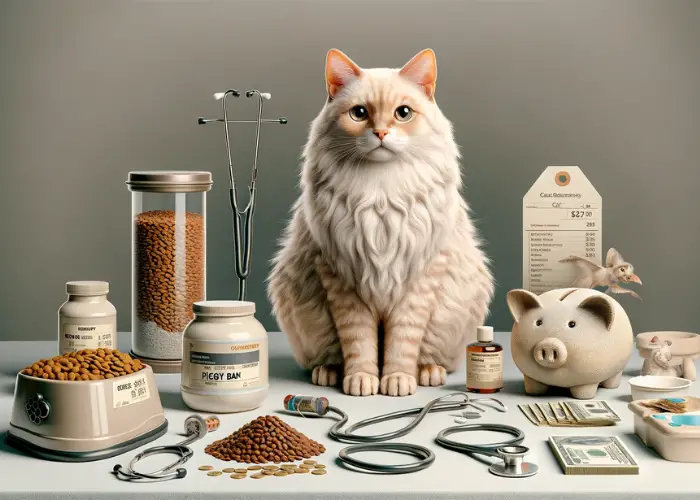
Owning a cream-colored cat, like any pet, comes with its set of financial responsibilities.
Prospective owners should be aware of the various costs involved, which go beyond the initial adoption fee.
These expenses are crucial in ensuring you can provide your feline companion a nurturing and happy life.
Initial Costs
- Adoption or Purchase Fees: These fees vary significantly depending on the breed and where you adopt.
- Initial Veterinary Care includes vaccinations, spaying or neutering, and an initial health check-up.
- Essentials: Purchasing items like a litter box, bed, scratching post, and toys.
Ongoing Expenses
- Food: High-quality cat food that suits the specific dietary needs of your chosen breed.
- Grooming Supplies: Brushes, shampoos, and other grooming tools are essential for breeds with longer fur.
- Routine Veterinary Care: Regular check-ups, vaccinations, and preventative medications for fleas, ticks, and worms.
Potential Additional Costs
- Pet Insurance: This can help cover unexpected medical expenses, though it’s an additional monthly cost.
- Emergency Veterinary Expenses: For unforeseen illnesses or accidents.
- Boarding or Pet Sitting: Costs for when you travel and can’t take your cat with you.
Long-Term Financial Planning
- Savings for Veterinary Care: Setting aside funds for potential health issues is wise, especially as the cat ages.
- Upkeep of Accessories: Over time, you’ll need to replace or upgrade items like cat trees, beds, and toys.
The financial commitment of owning a cream-colored cat is an ongoing responsibility that should be carefully considered before adoption.
These expenses ensure your cat can have a comfortable, healthy, and happy life. Preparing for the expected and unexpected costs will help you provide the best care for your new feline family member.
Conclusion
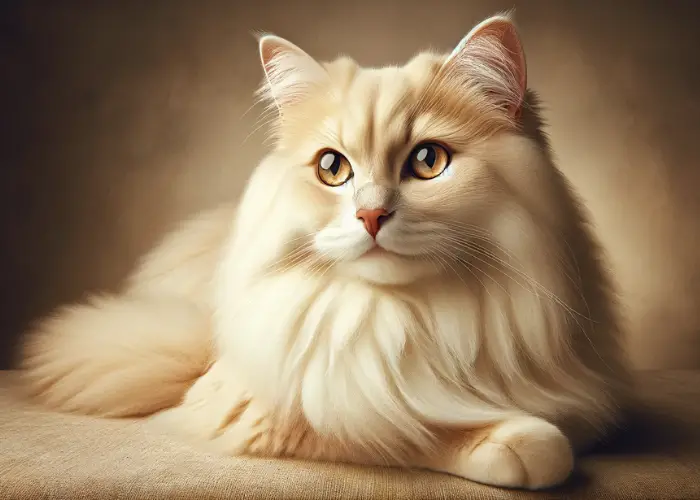
The world of cream-colored cat breeds is rich in diversity, beauty, and charm.
From the luxurious Persian to the majestic Maine Coon and the unique Sphynx, these cream beauties hold a special place in the hearts of cat lovers.
Their distinct characteristics, health considerations, and care requirements make them visually appealing and delightful companions.
